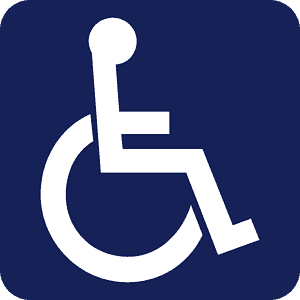Did you know that you may have a severe disability not covered in the Blue Book listing? When this happens, the Social Security Administration (SSA) uses GRID Rules to determine whether your condition hinders you from working and earning income.
So, what are disability GRID Rules? They are a set of rules that allow individuals with a disability but whose condition does not satisfy the Blue Book requirements to receive disability benefits.
Read this post to the end to learn more about disability GRID Rules and how they may apply to your case.
When Do Disability GRID Rules Apply?
Disability GRID Rules come into play only when you cannot work due to physical restrictions. This method considers your ability to complete previous job roles and your capacity for sedentary, light-duty, or medium-duty work.
Sedentary work includes jobs like accountancy or front desk work that involve less physical activity. Light duty requires you to spend several hours on your feet and limited physical activity.
Lastly, medium-duty work occasionally involves lifting 20 to 50 pounds or 10 to 25 pounds of force often, thus requiring more physical activity.
Understanding Skill Level
Work requires different skill levels. For instance, unskilled workers often perform the standard everyday manufacturing duties that do not need skills or technological know-how. They carry out fundamental tasks in production industries.
On the other hand, skilled workers have undergone specialized training, bringing technical knowledge and skills to their jobs. These workers can operate specific equipment.

Some skill sets, such as problem-solving, analytical abilities, critical thinking, and leadership roles, are transferable and can be used in different occupations.
Non-transferable skills like cash-flow planning in an accounting position, on the other hand, are not helpful in other occupations. According to the SSA, a person with transferable skills can perform another type of work.
The Importance of Age and Education
Generally, the odds of getting your disability claim accepted increase as you age. But the SSA believes that finding work and getting another job you qualify for is easier when you have higher education levels.
Medical vocational allowance or disability GRID Rules take your age and educational level into account. The SSA will consider your age, education level, work history, transferable skills, and related factors when evaluating your eligibility for disability payments.
Past Work Experience
The SSA will examine your past work, taking note of your job titles and responsibilities. That helps them establish whether you can work other types of jobs.
You must present a comprehensive work history going back at least ten years. The claims examiner will review your work history and decide whether you can still carry out any previous job responsibilities or transfer your skills to a different position.

If the claims examiner determines that you can use those skills in another job, you will not be declared disabled, nor will your claim be accepted.
To qualify for disability benefits, you must demonstrate that you cannot work and earn a living.
Residual Functional Capacity Form
The residual functional capacity (RFC) form may significantly influence your claim’s chances of approval. The RFC specifies what you can and cannot do and is filled out by your treating doctor.
For instance, if you have a back injury, the RFC could demonstrate that you cannot bend or squat, cannot lift more than five pounds, and need frequent rest breaks.
Such a report makes it easier for you to demonstrate to the claims examiner what you can or cannot do and that you cannot work and support yourself.
By demonstrating this, your RFC can increase your claim’s likelihood of acceptance.
Using The Grid
So, how do disability GRID Rules apply to a Social Security disability claim? This is a complex process.
Generally, multiple GRIDS may be relevant to your claim. Rule 201.0, for example, applies to individuals of advanced age, usually 55 and above.
It establishes that an applicant would meet the disability eligibility criteria if they are of advanced age, has a high school diploma or higher education that does not allow them to enter the job directly, and have a history of doing unskilled employment.

Similarly, Rule 201.15 applies to those who are approaching advanced age. They should be 50 to 54 years old and have completed high school but lack an education that would allow them to enter the workforce as skilled workers.
If you have a transferable skill or semi-skill, you will not be considered disabled, and your claim will be denied.
What To Do If Your Claim Is Denied
You should appeal immediately if the SSA denies your initial application for disability benefits. The denial letter should explain why your disability claim was rejected so you can collect sufficient evidence to prove that you cannot work.
You may consider working with a local disability attorney to increase your chances of being approved for benefits.
Request a free case evaluation to determine your chances of approval and how to proceed.
Get Help with Disability GRID Rules
If a medical condition limits your ability to work and you want to understand how disability GRID Rules apply to your claim, a disability lawyer can help.
You may still be eligible for disability benefits even if your condition does not match the Blue Book requirements.
At Legal Giant, we can connect you with a skilled disability lawyer knowledgeable about disability laws and will help collect the evidence required to support your claim.
Contact us at 833-641-1650 for a free case evaluation.

